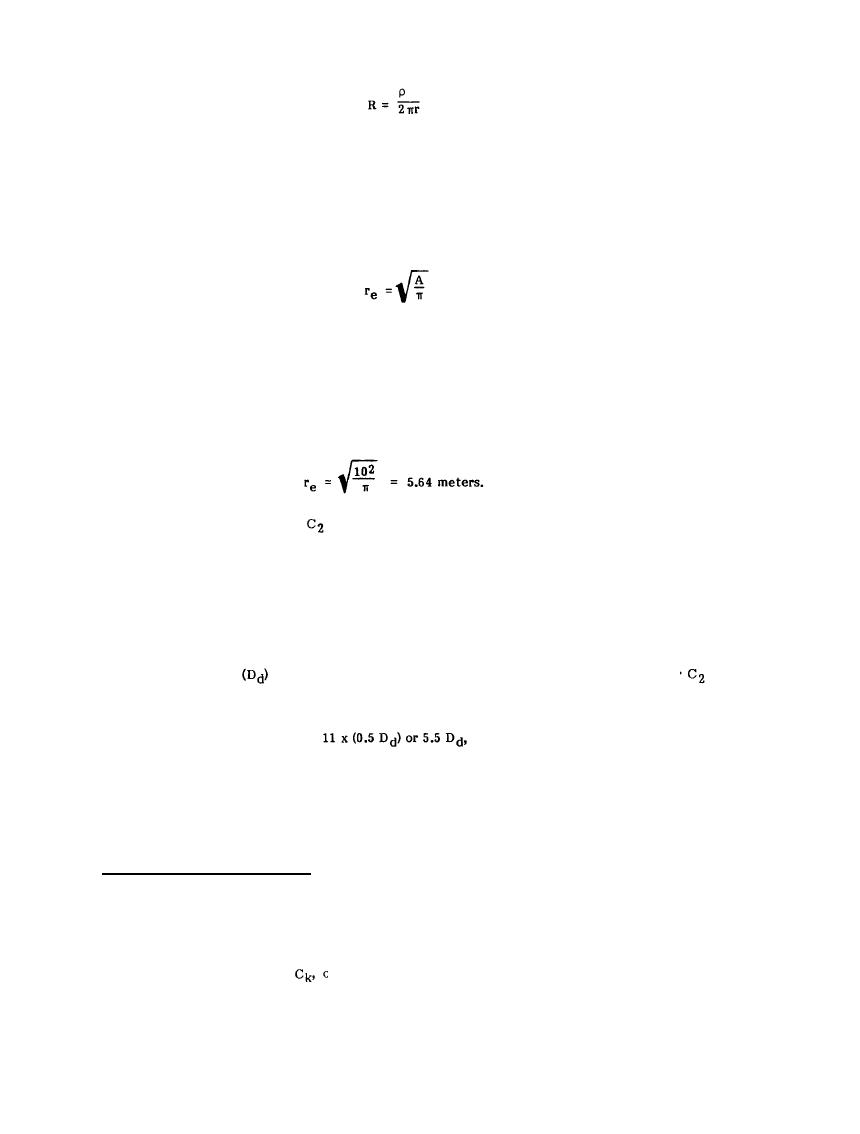

Custom Search
|
|

|
||
 MIL-HDBK-419A
Remembering that
is the true resistance, it is evident that if D = 5r, the error will be 25 percent, if D = 11r, the error is 10
percent; if D = 26r, the error is 4 percent, etc.
The equivalent radius of a large electrode system can be determined from
(2-49)
where
A = the area covered by the system.
Consider a rectangular grid 10 meters by 10 meters. Its effective radius is
For an accuracy of 90 percent, the probe
should be positioned at
D = 11 x 5.64
= 62 meters or 203 feet away.
A conservative estimate which leads to improved accuracy of the effective radius is that it is equal to one half
of the array. Thus for an accuracy of 90 percent, the location for
should
the longest diagonal dimension
be
which is the basis for the frequently quoted rule of thumb of 5 times the longest diagonal of the area of the
electrode under test. Table 2-6 gives the percentage accuracies obtained at probe locations up to 50 times the
longest diagonal.
2.7.2.2 Extensive Electrode Subsystems (2-13). When the earth electrode subsystem is extensive, it is
frequently difficult to locate the current probe at a distance of even five times the largest dimension and
measurements of resistance to earth are subject to large errors. In addition, a connection to the electrical
center of the subsystem may not be possible. Figure 2-18 shows a set of resistance curves for an extensive
earth electrode subsystem obtained at current probe spacings of up to 304 meters (1000 feet). Each curve
corresponds to a particular distance,
of the current probe from the point of connection to the earth
electrode subsystem. The potential probe spacing, P, is the independent variable.
2-42
|
 
|
|
 |
||